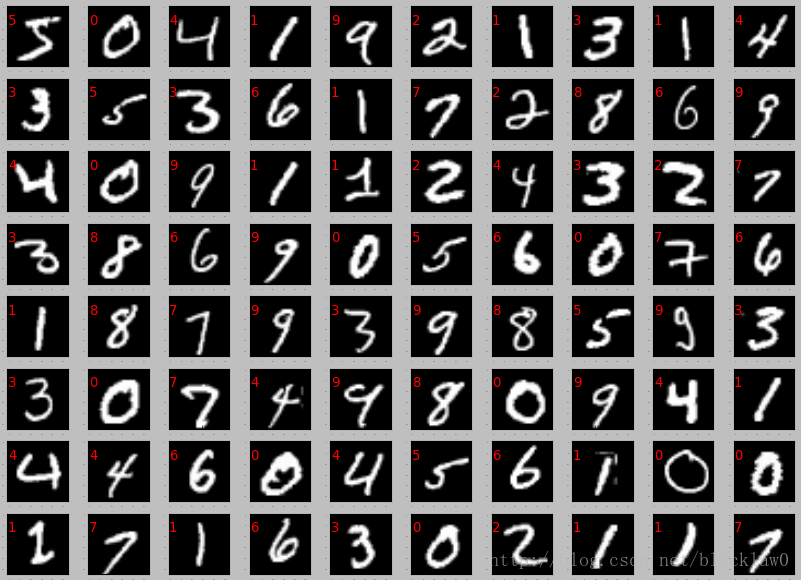
The original MNIST consisted of only 10000 images for the test dataset, which was not enough QMNIST was built to provide more data. It was developed by Facebook AI Research. Test = datasets.KMNIST('',train = False,download= True) Train = datasets.KMNIST('',train = True,download= True) Using Tensorflow import tensorflow_datasets as tfds KMNIST is a drop-in replacement for the MNIST dataset (28×28 pixels of grayscaled 70,000 images), consisting of original MNIST format and NumPy format.ĭata: train set 60000 images, the test set 10000 images Kuzushiji MNIST Dataset developed by Tarin Clanuwat, Mikel Bober-Irizar, Asanobu Kitamoto, Alex Lamb, Kazuaki Yamamoto and David Ha for Deep Learning on Classical Japanese Literature. Test = datasets.EMNIST('',train = False, split='byclass',download= True) Train = datasets.EMNIST('',train = True, split='byclass',download= True) Using tensorflow import tensorflow_datasets as tfds EMNIST ByMerge: 814,255 characters with 47 unbalanced classes.EMNIST Letters: 145,600 characters with 26 balanced classes.EMNIST MNIST: 70,000 characters with 10 balanced classes.EMNIST Digits: 280,000 characters with 10 balanced classes.EMNIST Balanced: 131,600 characters with 47 balanced classes.EMNIST B圜lass: 814,255 characters with 62 unbalanced classes.The six different splits provided in this dataset: The original NIST data is converted to a 28×28 pixel image format and structure matches that of MNIST dataset. EMNIST is made from the NIST Special Database 19. Train,test = tfds.load('binarized_mnist', split=)Įxtended MNIST derived from MNIST in 2017 and developed by Gregory Cohen, Saeed Afshar, Jonathan Tapson, and André van Schaik. Using TensorFlow import tensorflow_datasets as tfds It is used to evaluate generative models for images, so unlike MNIST labels are not provided here. The images are in grayscale format 28 x 28 pixels.ĭata: train set 50000 images, the test set 10000 images and validation set 10000 images Binarizing is done by sampling from a binomial distribution defined by the pixel values, originally used in deep belief networks(DBN) and variational autoencoders(VAE). They were developed by Salakhutdinov, Ruslan and Murray, Iain in 2008 as a binarized version of the original MNIST dataset. Test = datasets.MNIST('', train=False, download=True, Train = datasets.MNIST('', train=True, download=True, (x_train, y_train),(x_test, y_test) = mnist.load_data()įrom torchvision import transforms, datasets MNIST is taken as a reference to develop other such datasets. Researchers and learners also use it for trying on new algorithms. This is best suited for beginners as it is a real-world dataset where data is already pre-processed, formatted and normalized. As of February 2020, an error rate of 0.17 has been achieved using data augmentations with CNNs.

In 2018, an error rate of 0.18% by using simultaneous stacking of three kinds of neural networks. In 2013, an error rate of 0.21 using regularization and DropConnect.

In 2011, 0.27 error rate was achieved using the similar architecture of a convolutional neural network(CNN). Using affine distortions and the elastic distortions error rate of 0.39 was achieved by using a 6layer deep neural network. Some notable out of them are In 2004, a best-case error rate of 0.42% was achieved by using a classifier called LIRA, which is a neural classifier consisting of three neuron layers. Over the years, several methods have been applied to reduce the error rate. The original paper of MNIST showed the report of using SVM(Support Vector Machine) gave an error rate of 0.8%. Performance: Highest error rate, as shown on the official website, is 12%. Special Database 3 consists of digits written by employees of the United States Census Bureau.ĭata: Total 70000 images split into -Train set 60000 images, Test set 10000 images. Special Database 1 contains digits written by high school students. MNIST database consists of two NIST databases – Special Database 1 and Special Database 3.


 0 kommentar(er)
0 kommentar(er)
